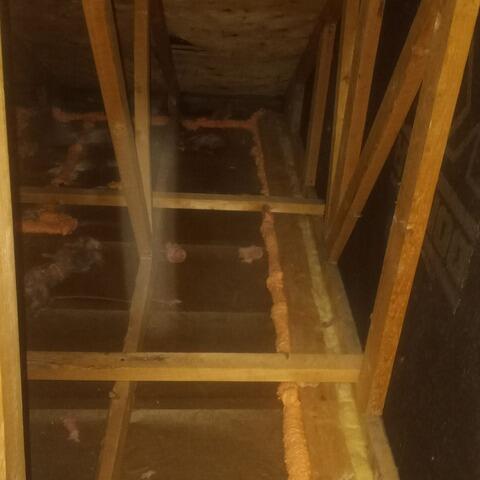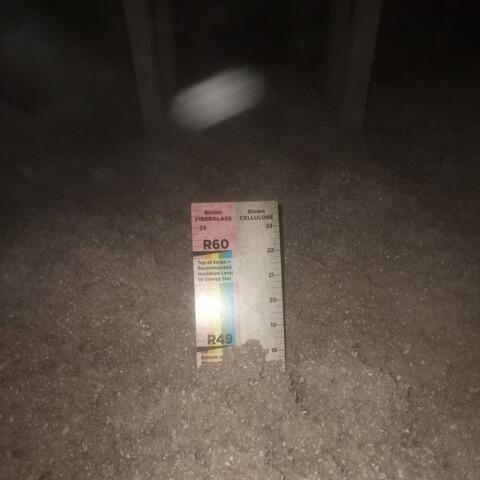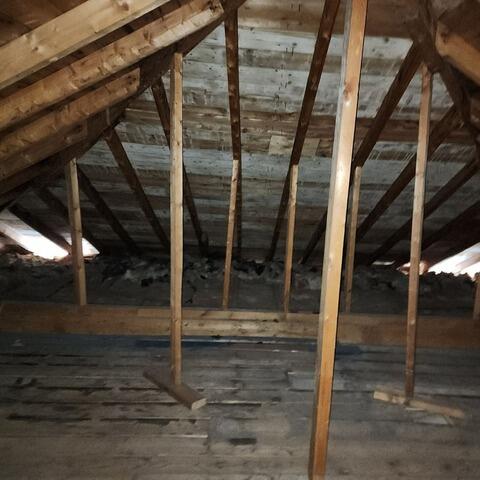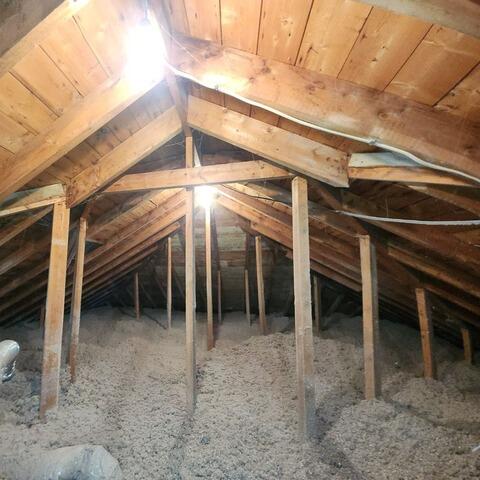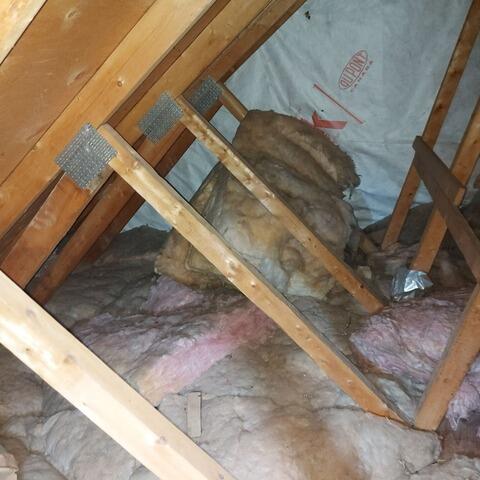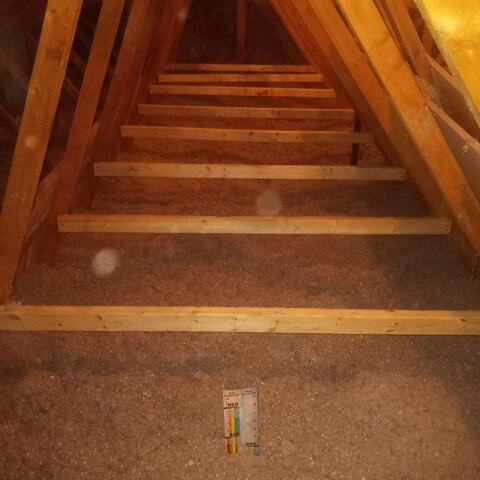Before & After Photos
Click on a photo to enlarge.
Attic Insulation in Terrasse-Vaudreuil, QC
Problem
Mr. Chris contacted us due to several complications in his attic. Our specialist, Toufic, went to Terrasse-Vaudreuil for a free inspection. He identified several issues. The attic contained mold, considerable air leaks, and inadequate insulation. It was clear that these problems had a negative impact on residential comfort and energy consumption. Toufic developed a detailed action plan to address these issues.
Solution
We removed the existing insulation, which was in poor condition. Then, we meticulously sealed the air leaks through pipes, cables, recessed lighting, etc. We also eliminated all mold stains using our excellent product, Mold-X2. To ensure optimal insulation, we blew in our cellulose fiber insulation, known for its excellent thermal insulation properties.
Complete Attic Insulation within a house in Saint-Paul-De-L'ile-Aux-Noix, Quebec
The owner of a beautiful home in Saint-Paul-de-l'Île-aux-Noix, Quebec, was concerned about excessive humidity in his attic. In fact, he doubted the solution proposed by another contractor, simply involving adding more insulation over the existing one to improve the thermal value. Our specialist confirmed that without sealing existing air leaks, adding insulation would never solve the issues of drafts and attic humidity.
We therefore removed the damaged old insulation and carefully sealed all air leaks using our ZypFoam. Next, we blew in our TruSoft cellulose insulation, reaching an R60 thermal value for optimal performance. The homeowner noticed a significant improvement in comfort, with no more drafts and a healthy, secure attic.
Attic insulation work in Papineauville, QC with TruSoft cellulose
We recently completed a project in Papineauville where the attic needed high-performance insulation. Before we intervened, the space was losing heat and making the house less comfortable. Our team proceeded step by step: inspecting the attic, caulking critical areas, carefully installing our TruSoft blown cellulose insulation to ensure uniform coverage and maximum performance, and sealing the ducts to prevent air leaks. Thanks to this approach, the attic is now perfectly insulated, optimizing energy efficiency, reducing heat loss, and improving the thermal comfort of the home while contributing to savings on heating and cooling bills. Every project follows our professional standards, including protection against ice dams and adherence to best practices in attic insulation to ensure durability, performance, and comfort all year round.
Attic transformation in Notre-Dame-De-La-Paix with True Soft Cellulose
Our client's attic in Notre-Dame-De-La-Paix had typical problems before our intervention, such as insufficient insulation, air leaks around ducts and hatches, unpleasant temperature variations, dust accumulation, and sometimes mold. To remedy these problems, Systèmes Éconergie used its proven techniques: installing our TrueSoft cellulose insulation for optimal thermal performance, carefully sealing air leaks to prevent energy loss, and installing radiant barriers to improve insulation performance. The result is a healthy, well-insulated attic that contributes to lasting thermal comfort and substantial energy savings.
A complete attic insulation in Montebello, Quebec with True Soft Cellulose
Our client's attic in Montebello had become a real challenge due to persistent moisture, aging and worn insulation, and cold air infiltration through ducts and vents. Thanks to the expertise of Systèmes Éconergie, we renovated this space methodically and efficiently. We removed the old compacted insulation, cleaned and treated all traces of mold, then applied high-performance blown insulation with Cellulose TrueSoft to ensure high and durable thermal insulation (R-60). Careful caulking of critical areas, such as recessed lighting fixtures, chimneys, and ducts, now ensures excellent airtightness, limiting heat loss and drafts. We also added radiant barriers to improve comfort in all seasons and installed adequate ventilation to remove moisture and prevent condensation. The result is a healthy, high-performance, comfortable, and energy-efficient attic that offers greater comfort, better indoor air quality, and real energy savings for the home.






